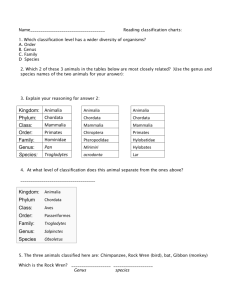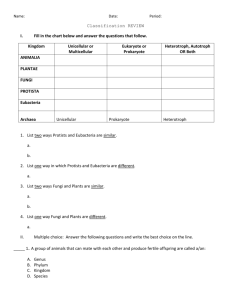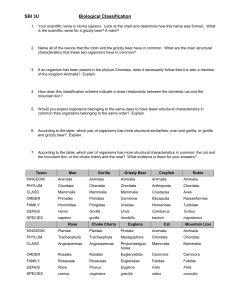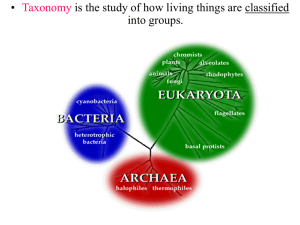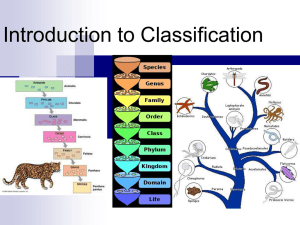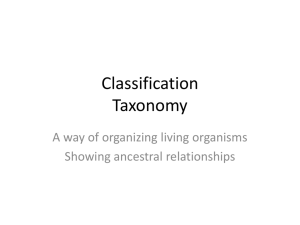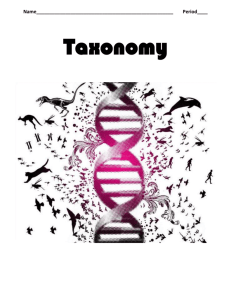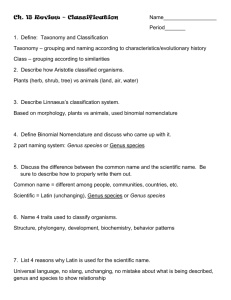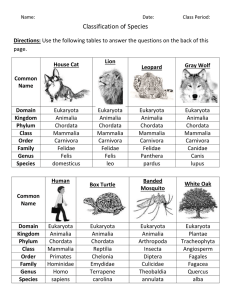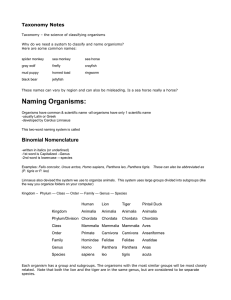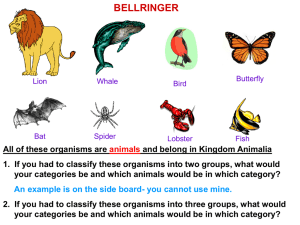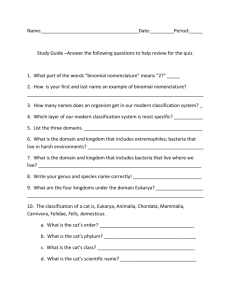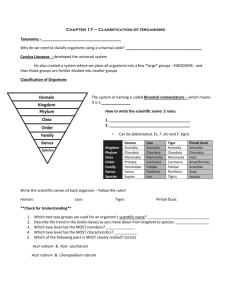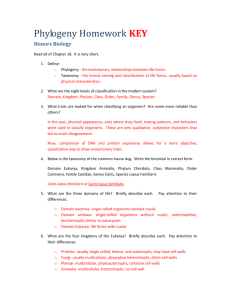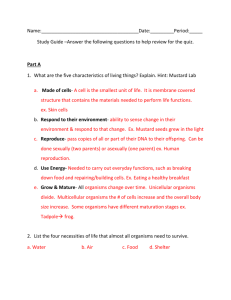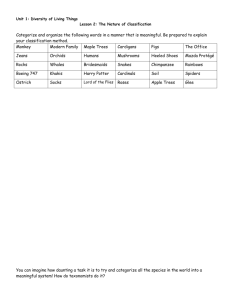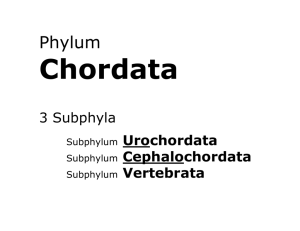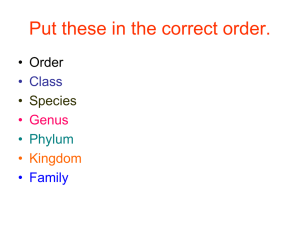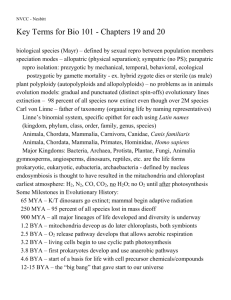PPT 2: primates
advertisement
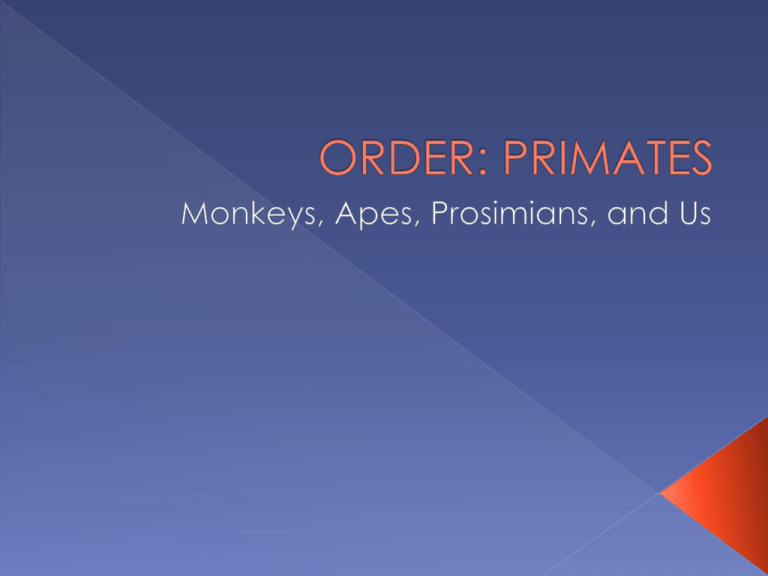
The origin of the order is commonly given as 65 MYA (million years ago) Some estimates go back to 85 MYA Source: http://en.wikipedia.org/wiki/File:Purgatorius_BW.jpg 55-65 MYA Lived in N. America and Europe Its fossils first discovered in Montana About 50 MYA, pretty soon after the dinosaurs go extinct, there is an explosion in the number of primate species—about 6000 species arise. The 200 species now living are the what remains of this differentiation, and the descendants of the survivors. TAXON EXAMPLE: YOUR PUPPY Kingdom Animalia Phylum Chordata Subphylum Vertebrata Class Mammalia Order Carnivora Family Canidae Genus Canis Species C. lupus Note: When writing the binomen of a species, use italics, and capitalize the name of the Genus! TAXON YOUR PUPPY YOU Kingdom Animalia Animalia Phylum Chordata Chordata Subphylum Vertebrata Vertebrata Class Mammalia Mammalia Order Carnivora Primates Family Canidae Great Apes Genus Canis Homo Species C. lupus H. sapiens The most basic groups to think about: Prosimians Monkeys Apes and humans Adapted from Jurmain et al. (1998) Limbs and locomotion: › Erect or semi-erect posture › Generalized limb structure allows a variety of locomotive behaviors. Limbs and locomotion: › Prehensile hands and feet. Five digits Opposable thumbs and big toes Fingernail instead of claws SLOW LORIS Generalized diet and teeth The senses and the brain: › Color vision (diurnal primates only) The senses and the brain: › Stereoscopic vision (depth perception) Eyes to the front Visual information from each eye transmitted to visual centers in both hemispheres in the brain Visual information processed by specialized brain structures TARSIER The senses and the brain: › Large and complex brains Visual information processing Large areas involved with the hand Maturation, Learning and Behavior › Long gestation › Single births instead of litters › Delayed maturation › Tendency to live in mixed-age groups › Dependence on learned behavior Theories: › Improved access to food › Protection from predators Types of groups: › Multi-male/multi-female › Most common type. › Chimps and Bonobos usually live in mm/mf fission-fusion groups. Types of groups: › Pair-bond › Examples: Gibbons and Siamangs, some monkeys Types of groups: One-Male/Multi Female › Gorilla The study of animals and their habitats that looks for patterns of relationship between the environment and social behavior. Assumes that the various components of an environment have evolved together. Food (amounts, qualities, distribution) Distribution of water Predators (distribution, types) Distribution of sleeping sites Activity patterns (nocturnal/diurnal) Relationships with other species Impact of human activities Of the baboon… › (MM/MF) › Savanna › Predators can be common Of the Slow Loris… › Solitary foraging › Insectivor › Slow moving The study of the relationship between behavior and natural selection. Sociobiological theory states that certain behaviors or behavioral pattern have been selected for because they increase reproductive success in individuals. Infanticide K-selection (vs. r-selection) Male / Female behaviors Sexual dimorphism The lack of long-term data: › On demography › On social behavior › Resource distribution Little data on relatedness through male line How to assign reproductive costs and benefits to particular behaviors
